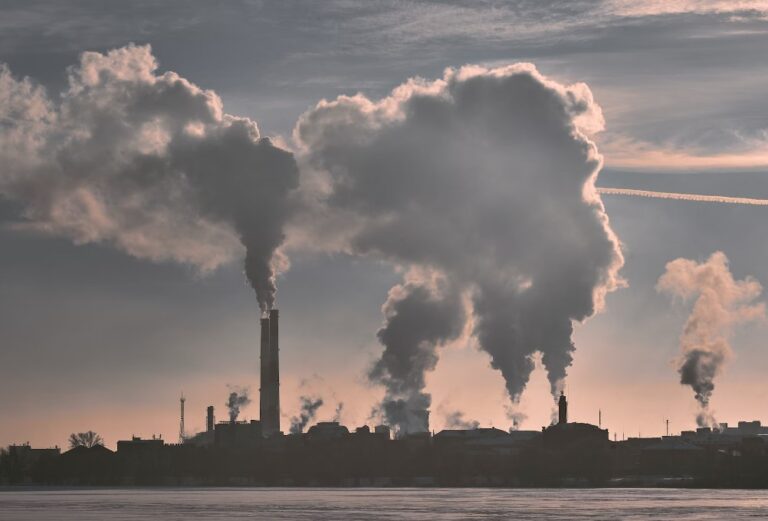Increasing the reduction of PM2.5 levels of air pollution below the limits set by the World Health Organization could extend the average lifespan globally by 2.3 years.
The impact of PM2.5 on global life expectancy is astonishing. This is seven times greater than that of HIV, five times greater than traffic accidents, and more than three times greater than alcohol abuse. This analysis was conducted by the University of Chicago and published in the latest annual update of the Air Quality Life Index, a report that assesses air quality worldwide.
Table of Contents
Pollution in South Asia: a serious public health problem
South Asia is the region of the world most affected by air pollution. Pollution levels are particularly high in India, Pakistan, and Bangladesh. There, fine particulate matter (PM2.5) pollution can reach levels dozens of times higher than World Health Organization (WHO) recommended limits.
The effects on public health are very serious. Fine particulate matter can penetrate deep into the lungs. Thus causing a range of respiratory problems, such as asthma, bronchitis and pneumonia. They can also cause heart disease, lung cancer and stroke.
According to the EPIC estimate, residents of Bangladesh, where the average level of PM2.5 exposure is estimated at 74 µg/m3, could gain 6.8 years of life expectancy if the pollution threshold were lowered to 5 µg/m3, the level recommended by WHO.
India’s capital, New Delhi, is the “most polluted megacity in the world,” with an annual average level of 126.5 µg/m3. Air pollution in New Delhi is due to a number of factors. Including heavy traffic, fossil fuel burning, and waste burning.
Air pollution is a serious public health problem in South Asia. Urgent measures need to be taken to reduce pollution and protect public health.
China’s fight against air pollution
China, on the other hand, has “made significant progress in combating air pollution” that began in 2014, Christa Hasenkopf, director of air quality programs at EPIC, told AFP.
Average air pollution in the country decreased by 42.3 percent between 2013 and 2021. But it remains six times higher than the threshold recommended by the WHO. If this progress continues over time, China’s population is expected to gain an average of 2.2 years of life expectancy, according to EPIC.
These data highlight China’s significant efforts to combat air pollution. And the possibility of future improvements for public health in the country.
Disparity between air pollution and resources
In general, the regions of the world most exposed are those that receive the least resources to combat it. As Christa Hasenkopf explains, there is a profound discrepancy between where the air is most polluted and where the most resources are being deployed globally to address the problem.
While there are international mechanisms to combat HIV, malaria and tuberculosis, such as the Global Fund, which invests $4 billion a year in these diseases, there is no equivalent for air pollution.
Yet pollution reduces the average life expectancy of a person in the Democratic Republic of Congo and Cameroon more than HIV, malaria and other diseases. This discrepancy highlights the urgent need to devote global resources to combating air pollution to protect public health in the most affected regions.
Read also: Air pollution is more harmful to health than smoking and alcohol
Progress and challenges
The Clean Air Act, a federal program in the United States, has helped reduce air pollution by 64.9 percent since 1970. Thus leading to a 1.4-year increase in the average life expectancy of Americans.
In Europe, air quality has improved in recent decades, following the same trend as in the United States. However, large disparities still exist between the east and west of the continent.
These efforts were, among other things, threatened by the increase in mega-forest fires around the world, caused by higher temperatures and more frequent droughts related to climate change.
These fires cause spikes, as in the case of California’s historic fire season in 2021. Which resulted in air pollution in Plumas County five times the threshold recommended by the WHO.
In addition, recent mega-fires in Canada in the summer of 2023 caused significant increases in pollution in the Quebec, Ontario, and eastern U.S. regions.
Read also: Air pollution, 12 things you can do to help reducing it












